 August
06
August
06
Tags
Vajda Lajos: A Hungarian Modernist
 On the 6th of August 1908, artist Lajos Vajda was born in Zalaegerszeg, Hungary. He was the youngest child born into a poor Jewish family of five. In 1916, his father moved the family to Serbia in search of a better life. Here the young Lajos came into contact with religious Byzantine-Orthodox art for the first time and made his first ever drawings of war ships and battle scenes. After 1923 the family moved back to Hungary, where Lajos was further supported by teachers at the National Hungarian Jewish Cultural Association such as Herman Leopold. In 1925, the first signs of tuberculosis started overshadowing his promising early career.
On the 6th of August 1908, artist Lajos Vajda was born in Zalaegerszeg, Hungary. He was the youngest child born into a poor Jewish family of five. In 1916, his father moved the family to Serbia in search of a better life. Here the young Lajos came into contact with religious Byzantine-Orthodox art for the first time and made his first ever drawings of war ships and battle scenes. After 1923 the family moved back to Hungary, where Lajos was further supported by teachers at the National Hungarian Jewish Cultural Association such as Herman Leopold. In 1925, the first signs of tuberculosis started overshadowing his promising early career.
In spite of this, in 1927, he enrolled at the Academy of Fine Arts in Budapest, where, alongside Bela Hegedus, Korniss Dezso, Alexander Trauner, György Kepes, Erno Schubert, and Kreunicker he formed the “progressive youth” or “new savages” group whose one particular exhibition caused an uproar in conservative circles, and the group members, including Vajda, were expelled from college. Vajda and his other fellow students of István Csók and János Vaszary had established this group with a passion for modern art; they saw themselves somewhat of an equivalent of the French ” Fauves”, even calling themselves “Vadak” (Wild Ones). At this time Vajda came into contact with Lajos Kassák, who promoted Hungarian Modernism. At the end of the 1920s, Vajda developed a fascination with Russian Constructivism and Socialist doctrine. He joined the Munka Kör (Work Circle), a group of artists, intellectuals and workers who shared a belief in an artistic renewal that was to coincide with a revolution in society.
 In 1930 he travelled to Paris where he spent nearly four years living as a destitute young artist in old hostels, often close to starvation. Here, he became a regular visitor to the Ethnography Museum and developed a new interest in the culture of Oceánia, and the demonstrative performances of Indian and African tribes. He also started appreciating the artistic potentials of film and began to produce complex modernist photomontages.
In 1930 he travelled to Paris where he spent nearly four years living as a destitute young artist in old hostels, often close to starvation. Here, he became a regular visitor to the Ethnography Museum and developed a new interest in the culture of Oceánia, and the demonstrative performances of Indian and African tribes. He also started appreciating the artistic potentials of film and began to produce complex modernist photomontages.
He returned to Hungary in 1934, physically worse for wear, but artistically recharged. He ended up spending his summers in Szentendre, a small town and art colony on the Danube. Following in the footsteps of the composers Belá Bártok and Zoltán Kodály, Vajda drew inspiration from the archaic Serbian, Slavic and Hungarian motifs that he encountered on local tombstones and in the architecture of homes and churches in Szentendre. After a period of great activity, he held his first exhibition at his studio in 1937. A critical review stated: “Lajos Vajda takes on a tragic artistic position, doing so with a stark consistency that is unusual in Hungary. This is modern catacomb art. We see fantastic hieroglyphics and dark mementos. Something is afoot in this Europe with a dishevelled soul.”
“Towards the end of the 1930s, Vajda became increasingly isolated. He had lost his believe in the Munka Kör and started creating barren, nightmarish landscapes inhabited by devilish birds, apocalyptic monsters, gnomes, and ghastly human and vegetable forms. Vajda’s later work, dating from 1939 and 1940, consists of large drawings  in ink and charcoal with little colour. They are his final depictions of a demonic world. In 1940, Vajda was drafted to the Hungarian Labour Service (Munkaszolgálat), the required military substitution for Jewish men, who were no longer permitted to serve in the regular armed forces since the passing of the Hungarian anti-semitic laws. Lacking warm clothing, Vajda got a severe pneumonia, and was sent back to Budapest, where he was hospitalized for eight months amid awful conditions. His wife finally managed to take him to a sanatorium in Budakeszi, where he, aged only 33, died on September 7, 1941. He was buried in the Jewish Cemetery of Budapest. In 1943, after Lajos Vajda’s death, there was a posthumous exhibition of his works at the Budapest Alkotás House of Art. The opening of the exhibition took place amid apocalyptical circumstances. The visitors fled the exhibition rooms in order to escape an air raid.” (Weimar)
in ink and charcoal with little colour. They are his final depictions of a demonic world. In 1940, Vajda was drafted to the Hungarian Labour Service (Munkaszolgálat), the required military substitution for Jewish men, who were no longer permitted to serve in the regular armed forces since the passing of the Hungarian anti-semitic laws. Lacking warm clothing, Vajda got a severe pneumonia, and was sent back to Budapest, where he was hospitalized for eight months amid awful conditions. His wife finally managed to take him to a sanatorium in Budakeszi, where he, aged only 33, died on September 7, 1941. He was buried in the Jewish Cemetery of Budapest. In 1943, after Lajos Vajda’s death, there was a posthumous exhibition of his works at the Budapest Alkotás House of Art. The opening of the exhibition took place amid apocalyptical circumstances. The visitors fled the exhibition rooms in order to escape an air raid.” (Weimar)
Feature Image: Lajos Vajda, Tolsztoj és Gandhi 1930-33, collage, public domain (wiki)
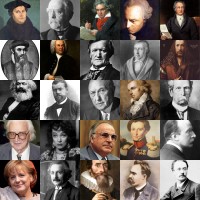


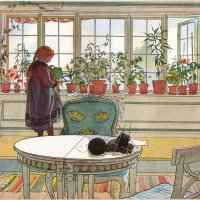
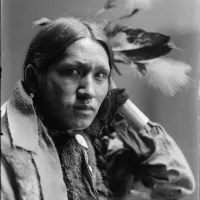
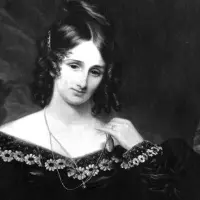
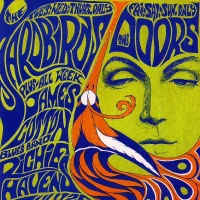
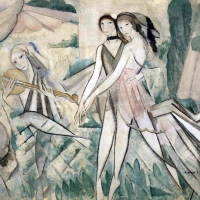
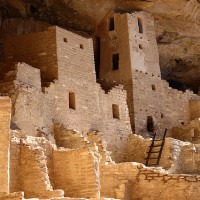

I love his use of colour.. xxx
LikeLike
My 94-year old aunt has an original oil painting by Vajda Lajos. It measures approx. 30″ x 30″ and in perfect condition. It was from her father in Belgium. She is contemplating selling it, or keeping it and insuring it. Any ideas what the piece may be worth? Thank you in advance, Alan
LikeLike
Pingback: Szentendre — 1 Perfect Day Trip From Budapest - Timeless Travel Steps